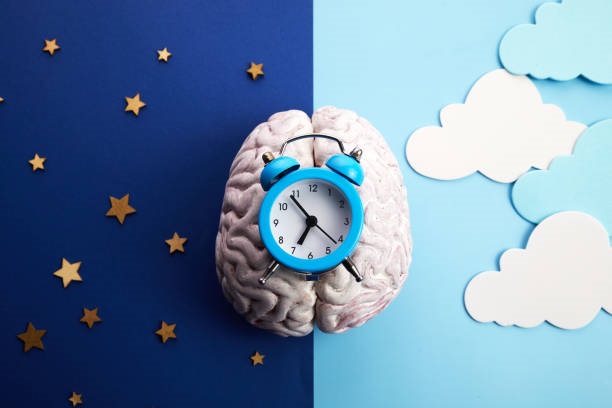
Sleep syncing is based on the body’s internal clock, the circadian rhythm, which regulates sleep and wake cycles. This biological system naturally aligns with sunrise and sunset patterns.
Modern lifestyles often disrupt this alignment through artificial lighting, late-night screen use, and irregular schedules. Sleep syncing helps restore the natural relationship between light exposure and rest.
By following sunlight cues, you allow your body to release hormones like melatonin and cortisol at the right times, supporting more restful and refreshing sleep each night.
Light exposure directly affects the brain’s production of melatonin, a hormone essential for initiating sleep. Bright light in the morning signals alertness, while darkness triggers sleep readiness.
Sunlight exposure early in the day strengthens the sleep-wake cycle, making it easier to fall asleep at night. Natural light helps regulate body temperature and hormonal activity.
Artificial light, especially blue light from screens, can delay melatonin release, making it harder to fall asleep. Managing light exposure is key to effective sleep syncing.
When your body follows a natural light schedule, you may experience deeper and more restorative sleep cycles. This leads to improved concentration, mood stability, and reduced stress.
Sleep syncing supports better digestion, metabolism, and energy regulation, as your body functions in harmony with its natural timing system.
Long-term benefits include a stronger immune system, healthier skin, and reduced risk of chronic conditions linked to poor sleep patterns.
Start by setting a consistent bedtime and wake time that aligns with sunrise and sunset in your area. Gradual changes work better than sudden schedule shifts.
Expose yourself to natural light within the first hour of waking. This strengthens your circadian rhythm and helps set your internal clock.
Reduce exposure to artificial light at least one hour before bedtime. Dimming lights signals the body to begin its nighttime rest process.
Morning sunlight exposure triggers the release of cortisol, which boosts alertness and energy for the day ahead. It also signals your body when to start winding down later.
Spending at least 20 minutes outside in the morning can greatly enhance your ability to fall asleep at night. This works even on cloudy days, as natural light is still effective.
Combining morning light exposure with light physical activity, such as walking, further strengthens your body’s natural sleep-wake rhythm.
Evening exposure to bright or blue light can delay melatonin production, making it harder to feel sleepy. This often results in late nights and morning fatigue.
Avoid using screens without blue light filters in the evening. Opt for warm, dim lighting in your home to encourage your body to prepare for rest.
Simple changes like using lamps instead of overhead lighting can significantly improve your body’s transition into sleep mode.
Your bedroom should be a dark, cool, and quiet environment to promote deep rest. Blackout curtains can block outside light sources that disrupt sleep.
Eliminate electronic devices or cover their lights to reduce distractions. A completely dark room helps maintain a steady melatonin release throughout the night.
Consider using a sunrise alarm clock that gradually brightens to mimic natural dawn, making waking up more pleasant and aligned with your body’s rhythm.
Daylight duration changes with the seasons, requiring small adjustments to your sleep syncing routine. Winter may require more effort to get adequate morning light.
In summer, longer daylight hours can lead to later bedtimes. Maintaining a consistent sleep schedule helps keep your body clock steady.
Artificial light that mimics daylight can be useful in darker months, supporting mood and energy while keeping your sleep-wake cycle in balance.
Sleep syncing can reduce symptoms of anxiety and depression by stabilizing hormonal cycles and ensuring adequate rest. A steady routine supports emotional regulation and resilience.
Exposure to natural light boosts serotonin levels, enhancing mood and motivation. Over time, this can lead to a more positive outlook and reduced stress levels.
Mental clarity and focus improve with consistent sleep, making daily tasks easier to manage and increasing overall life satisfaction.
Busy work schedules, travel, and lifestyle habits can make consistent sleep syncing difficult. Planning light exposure and sleep times in advance can help maintain progress.
If you work night shifts, use bright light therapy during waking hours and blackout curtains during sleep times to mimic natural patterns.
Gradual adjustments of 15 minutes at a time make it easier to transition into a sleep-synced schedule without feeling overly tired.
Integrating sleep syncing into your daily routine means prioritizing both sleep quality and light exposure year-round. Consistency is more important than perfection.
Combining healthy habits like regular exercise, balanced diet, and stress management enhances the benefits of sleep syncing. Each supports your circadian rhythm naturally.
Over time, sleep syncing becomes effortless, leading to sustained energy, sharper thinking, and overall well-being that feels natural and deeply restorative.

This post has been published by the admin of our website, responsible for content management, quality checks, and providing valuable information to our users.


